




Stainless steel appliances and fixtures are known for their sleek and modern look, making them a popular choice in many kitchens and bathrooms. However, they can sometimes become stained or tarnished over time, leading many homeowners to wonder if it’s safe to use bleach on stainless steel surfaces. Before reaching for that bottle of bleach, it’s important to understand the potential risks and benefits.
Bleach is a powerful disinfectant and stain remover, commonly used in many households for cleaning purposes. While it can be effective in removing tough stains and killing bacteria, using bleach on stainless steel requires caution. The high concentration of chlorine in bleach can react with the stainless steel, causing it to corrode or become discolored. This is particularly true if the bleach is left on the surface for an extended period or if it is not properly rinsed off.
Experts recommend using bleach on stainless steel only as a last resort, and only if diluted with water and used sparingly. It’s also important to test a small, inconspicuous area first to ensure that the bleach will not cause any damage. Additionally, it is imperative to thoroughly rinse off the bleach with water and wipe the surface dry to prevent any potential damage.
Expert Tip: If possible, it’s best to avoid using bleach on stainless steel altogether. Instead, opt for more gentle cleaning solutions specifically designed for stainless steel surfaces.
In conclusion, while bleach can be effective in removing stains and disinfecting surfaces, it should be used with caution on stainless steel. Consulting with a professional or reading the manufacturer’s guidelines is always recommended before using bleach on stainless steel. By following these expert tips, you can safely maintain the beauty and durability of your stainless steel appliances and fixtures.
Using Bleach on Stainless Steel: What You Should Know
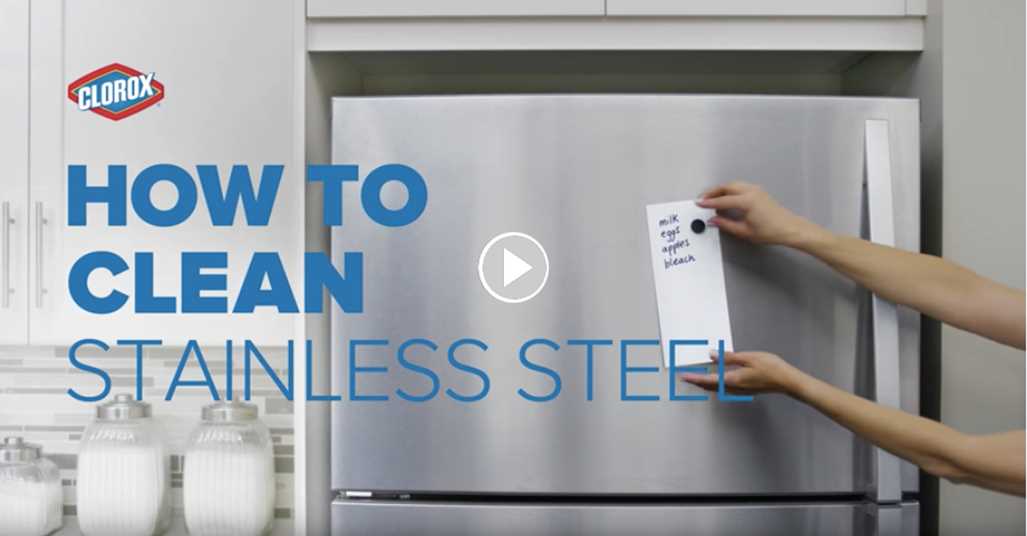
Stainless steel is a popular choice for kitchen appliances and equipment due to its durability and sleek appearance. However, when it comes to cleaning stainless steel, it is important to use the right products and methods to avoid causing any damage. One common question that arises is whether bleach can safely be used on stainless steel.
The Effects of Bleach on Stainless Steel
Bleach is a powerful cleaning agent that is often used to remove tough stains and disinfect surfaces. However, when it comes into contact with stainless steel, bleach can cause some unwanted effects.
- Bleach can cause discoloration on stainless steel surfaces. This can result in blotchy spots or a dull appearance.
- Long-term use of bleach on stainless steel can cause pitting or corrosion, compromising the integrity of the material.
- Bleach can also damage the protective finish on stainless steel, making it more prone to scratches and stains in the future.
Alternatives to Bleach
If you want to clean your stainless steel without risking any damage, there are several alternative cleaning agents you can use:
- Vinegar: Vinegar is a mild acid that can effectively remove stains and disinfect stainless steel surfaces. Dilute vinegar with water and use a soft cloth to wipe down the stainless steel.
- Baking Soda: Baking soda is a gentle abrasive that can remove tough stains and restore shine to stainless steel. Create a paste with baking soda and water, and use a soft cloth or sponge to scrub the stainless steel.
- Commercial Stainless Steel Cleaners: There are also specific cleaning products available that are specifically designed for stainless steel. These cleaners are formulated to remove stains and restore the shine without damaging the surface.
Tips for Cleaning Stainless Steel
Regardless of which cleaning agent you choose, it is important to follow these tips when cleaning stainless steel:
- Always read the manufacturer’s instructions and recommendations for cleaning the specific stainless steel product you have.
- Test any cleaning agent on a small, inconspicuous area of the stainless steel first to ensure it does not cause any damage or discoloration.
- Use a soft cloth or sponge to apply the cleaning agent and gently scrub the stainless steel, following the grain of the metal.
- Rinse the stainless steel thoroughly with water after cleaning to remove any residue.
- Dry the stainless steel with a clean, soft cloth to prevent water spots or streaks.
Conclusion

Bleach can cause discoloration, corrosion, and damage to the protective finish of stainless steel. It is best to avoid using bleach on stainless steel and opt for milder cleaning agents instead. With the right products and cleaning techniques, you can keep your stainless steel looking clean and shiny without causing any harm.
Potential Risks and Damage to Stainless Steel
While bleach may effectively clean stainless steel surfaces, it is important to be aware of the potential risks and damage it can cause. Here are some key points to consider:
Corrosion:
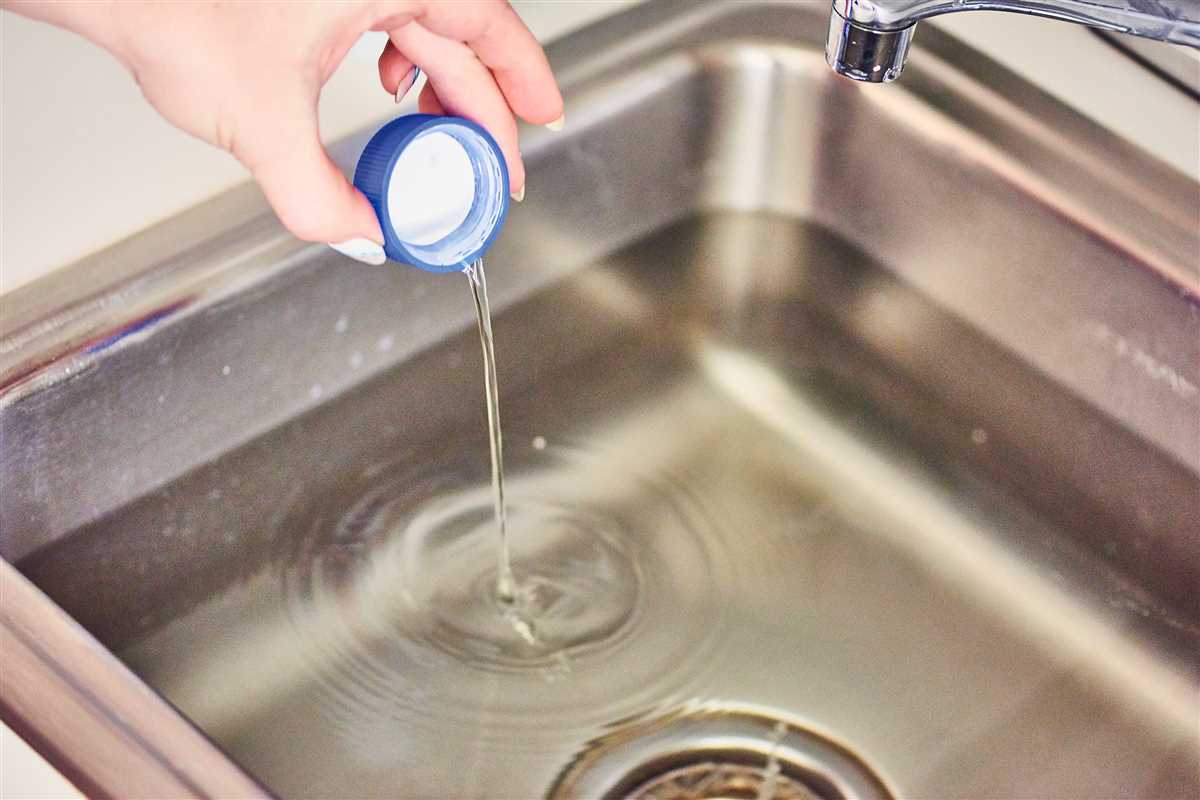
- Bleach contains chlorine, which is a powerful oxidizer. When used in high concentrations or left on stainless steel surfaces for too long, chlorine can cause corrosion.
- Extended exposure to bleach can result in pitting or etching on the stainless steel surface, leading to permanent damage.
Discoloration:
- Bleach can cause stainless steel to lose its shine and become discolored.
- Dark spots or streaks may appear on the surface, especially if the bleach is not properly diluted or if it is left in contact with the stainless steel for an extended period of time.
Damage to Protective Coatings:
- Many stainless steel appliances and surfaces have protective coatings to prevent rust and corrosion. Bleach can potentially strip away these protective coatings, leaving the stainless steel vulnerable to damage.
- Repeated use of bleach may weaken the protective coating over time, making the stainless steel more susceptible to staining and corrosion.
Health Hazards:
- Bleach is a strong chemical that can be harmful if ingested or comes into contact with the skin or eyes. It is important to take proper precautions, such as wearing gloves and avoiding direct contact when using bleach.
- Using bleach in enclosed areas without proper ventilation can also pose health risks, as the fumes can be irritating to the respiratory system.
Overall, while bleach may be effective for cleaning stainless steel, it is important to be cautious and use it sparingly. It is advisable to test a small, inconspicuous area before applying bleach to the entire surface. Additionally, it is recommended to use milder cleaning agents specifically designed for stainless steel to minimize the risk of damage.
Understanding the Chemical Reactions
- Bleach is a strong chemical compound that is commonly used as a disinfectant and cleaning agent. It is made up of sodium hypochlorite, which is a powerful oxidizer.
- Stainless steel, on the other hand, is a metal alloy composed of iron, chromium, and other elements. It is known for its corrosion resistance and durability.
When bleach comes into contact with stainless steel, chemical reactions can occur due to the oxidizing properties of bleach. However, the extent and nature of these reactions depend on several factors:
- Concentration of bleach: Higher concentrations of bleach can result in more vigorous reactions with stainless steel.
- Exposure time: Prolonged exposure to bleach can increase the likelihood of reactions.
- Type of stainless steel: Different types of stainless steel alloys may react differently to bleach. Some may be more resistant to the oxidizing effects of bleach, while others may be more prone to corrosion.
The chemical reactions that can occur between bleach and stainless steel may include:
- Oxidation: The oxidizing properties of bleach can cause the stainless steel to undergo oxidation, leading to the formation of iron oxide (rust) or chromium oxide. This can result in discoloration or pitting on the surface of the stainless steel.
- Corrosion: If the bleach is highly concentrated or the exposure time is prolonged, it can corrode the protective layer of chromium oxide on the surface of the stainless steel. This can lead to the formation of rust or other surface damage.
To prevent or minimize the chemical reactions between bleach and stainless steel, it is recommended to:
- Dilute bleach: Use a diluted solution of bleach to reduce its oxidizing power.
- Limit exposure time: Avoid leaving bleach on stainless steel surfaces for extended periods.
- Rinse thoroughly: Rinse the stainless steel surface with water after cleaning with bleach to remove any residual bleach.
- Consult manufacturer guidelines: Follow the manufacturer’s recommendations regarding the use of bleach on stainless steel surfaces.
By understanding the chemical reactions that can occur between bleach and stainless steel, you can take the necessary steps to safely clean and disinfect stainless steel surfaces without causing damage or discoloration.
Expert Advice on Safe Cleaning Methods
1. Understanding the Nature of Stainless Steel
Before diving into cleaning methods, it’s crucial to understand the nature of stainless steel. Stainless steel is a highly durable and corrosion-resistant material commonly used in kitchens and other areas where hygiene is important. However, it can still be susceptible to certain types of damage if not cleaned properly.
2. Avoid Using Abrasive Cleaners
While stainless steel is known for its resilience, it is not impervious to scratches and damage. Therefore, it is important to avoid using abrasive cleaners that can scratch the surface of the stainless steel. Instead, opt for mild, non-abrasive cleaners that are specifically designed for stainless steel.
3. Use Warm Water and Dish Soap
For regular cleaning of stainless steel surfaces, a simple mixture of warm water and dish soap can be highly effective. Use a soft cloth or sponge to gently wipe away any dirt or stains. Rinse thoroughly with warm water and dry with a clean cloth to prevent water spots.
4. Consider Vinegar as a Natural Cleaner
If you prefer natural cleaning solutions, vinegar can be a good option for cleaning stainless steel. Dilute vinegar with water in a 1:1 ratio and use a soft cloth to wipe the surface. Avoid leaving the vinegar solution on the stainless steel for an extended period to prevent potential damage.
5. Avoid Using Bleach on Stainless Steel
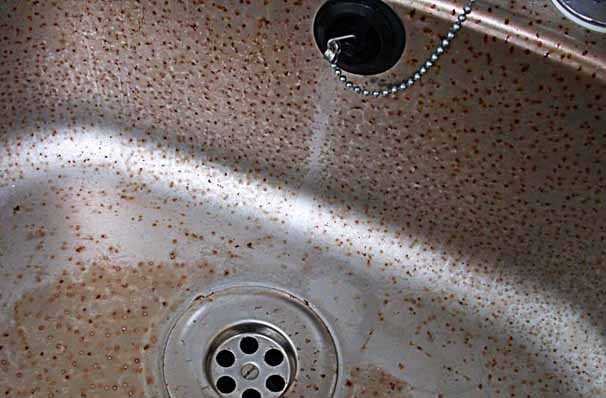
While bleach is a powerful disinfectant, it is not recommended for cleaning stainless steel. Bleach can cause damage to the protective layer of stainless steel, resulting in pitting or corrosion. Therefore, it’s best to avoid using bleach on stainless steel surfaces.
6. For Tough Stains, Use Baking Soda
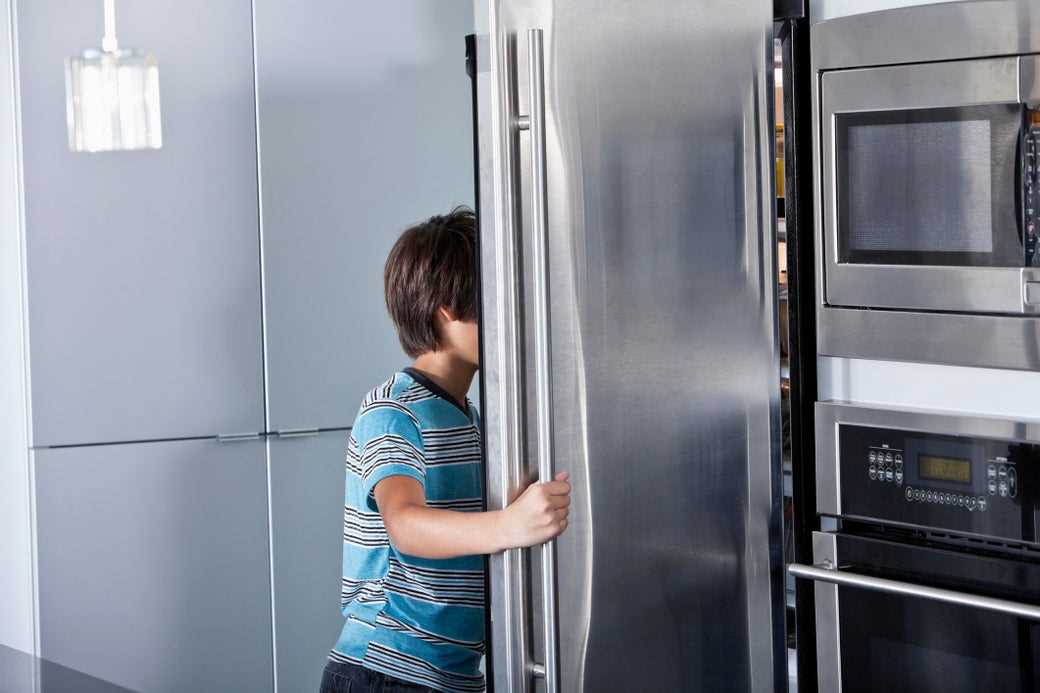
If you encounter tough stains on your stainless steel surfaces, such as grease or burnt-on food, baking soda can come to the rescue. Create a paste by mixing baking soda with water and apply it to the stain. Gently scrub the area with a soft cloth and rinse with warm water.
7. Consider Stainless Steel Cleaners
If you want to invest in a specialized cleaner for stainless steel, there are many options available on the market. These cleaners are specifically formulated to remove dirt, fingerprints, and stains without causing any damage to the stainless steel. Follow the instructions provided by the manufacturer for the best results.
8. Regular Maintenance is Key
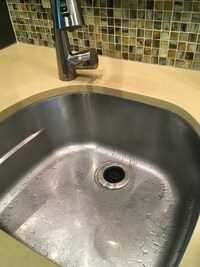
To keep your stainless steel surfaces in pristine condition, regular maintenance is crucial. Wipe down the surfaces daily with a damp cloth to remove any dirt or smudges. Avoid using abrasive tools or harsh cleaning agents, and always dry the stainless steel thoroughly after cleaning to prevent water spots.
By following these expert tips, you can safely clean your stainless steel surfaces and ensure their longevity and aesthetic appeal.
Alternative Cleaning Solutions for Stainless Steel
Vinegar
One alternative cleaning solution for stainless steel is vinegar. Vinegar is a natural cleaner that can safely be used on stainless steel surfaces. To clean stainless steel with vinegar, follow these steps:
- Mix equal parts of vinegar and water in a spray bottle.
- Spray the solution onto the stainless steel surface.
- Gently scrub the surface with a soft cloth or sponge.
- Rinse the surface with clean water.
- Dry the surface thoroughly with a clean cloth to prevent water spots.
Baking Soda
Baking soda is another effective cleaning solution for stainless steel. It can help remove tough stains and grime without scratching the surface. Here’s how to clean stainless steel with baking soda:
- Mix baking soda with water to create a paste-like consistency.
- Apply the paste to the stainless steel surface.
- Gently scrub the surface using a soft cloth or sponge.
- Rinse the surface with clean water.
- Dry the surface thoroughly with a clean cloth.
Commercial Stainless Steel Cleaner
If natural remedies are not effective in cleaning your stainless steel, you can also opt for commercial stainless steel cleaners. These cleaners are specifically designed for stainless steel surfaces and can help remove stubborn stains and fingerprints. Make sure to follow the instructions provided by the manufacturer when using commercial stainless steel cleaners.
Preventive Measures
In addition to regular cleaning, taking preventive measures can help keep your stainless steel surfaces looking their best. Here are some tips:
- Wipe down stainless steel surfaces regularly with a soft cloth or sponge.
- Avoid using abrasive cleaners, steel wool, or rough scrubbing brushes that can scratch the surface.
- Avoid leaving acidic or salty substances on stainless steel surfaces for an extended period.
- Use a stainless steel cleaner or polish to maintain the shine of the surface.
| Cleaning Solution | Usage | Effectiveness | Precautions |
|---|---|---|---|
| Vinegar | Mix equal parts vinegar and water, spray on surface, scrub, rinse, and dry. | Effective for general cleaning. | Avoid using on stone countertops or marble surfaces. |
| Baking Soda | Mix with water to create a paste, apply, scrub, rinse, and dry. | Effective for tough stains and grime. | May leave a white residue if not rinsed properly. |
| Commercial Stainless Steel Cleaner | Follow manufacturer’s instructions. | Effective for stubborn stains and fingerprints. | Use in a well-ventilated area and avoid inhaling fumes. |
Final Thoughts on Using Bleach on Stainless Steel
While it is generally safe to use bleach on stainless steel, there are a few important considerations to keep in mind.
1. Dilute the Bleach
It is important to dilute the bleach before using it on stainless steel. Pure bleach can be too harsh and may damage the surface. Mix one part bleach with nine parts water to create a safe and effective cleaning solution.
2. Test an Inconspicuous Area
Before applying bleach to the entire surface, it is recommended to test it on a small, inconspicuous area of the stainless steel. This will help you determine if the bleach will cause any damage or discoloration.
3. Avoid Prolonged Contact
Even though diluted bleach is safe for stainless steel, it is still important to avoid prolonged contact. Rinse the surface thoroughly after cleaning and avoid leaving bleach on the stainless steel for extended periods of time.
4. Use a Soft Cloth or Sponge
When applying bleach to stainless steel, use a soft cloth or sponge to avoid scratching the surface. Abrasive materials can cause permanent damage to the stainless steel.
5. Follow Manufacturer’s Instructions
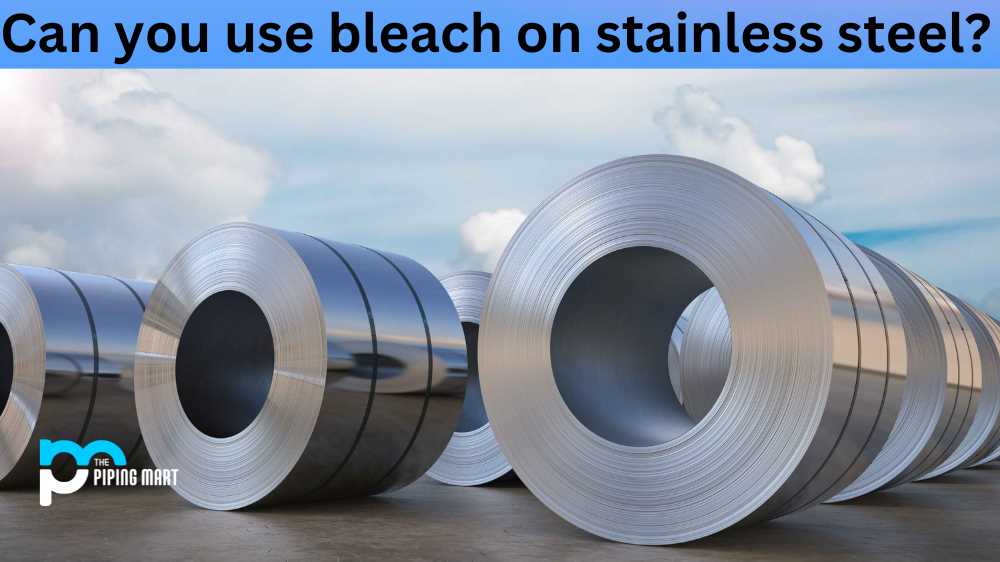
Always consult the manufacturer’s instructions for cleaning stainless steel. Some appliances or products may have specific guidelines that should be followed to ensure the best results and avoid any damage.
By following these guidelines, you can safely use bleach on stainless steel and effectively remove stains and disinfect the surface. However, it is always important to use caution and to test on a small area first to avoid any potential damage.
FAQ
Can bleach damage stainless steel?
Bleach can potentially damage stainless steel if used improperly. It is important to follow the manufacturer’s instructions and dilute the bleach properly to avoid any damage.
Is it safe to use bleach on stainless steel appliances?
It is generally safe to use bleach on stainless steel appliances, but it is important to dilute it properly and avoid leaving it on the surface for too long. Rinse the surface thoroughly after cleaning with bleach to remove any residue.
How should I clean stainless steel with bleach?
To clean stainless steel with bleach, it is recommended to dilute the bleach with water according to the manufacturer’s instructions. Apply the diluted bleach to the surface using a soft cloth or sponge, and then rinse thoroughly with water. Dry the surface with a clean cloth to prevent any water spots or streaks.
Can bleach cause discoloration on stainless steel?
Bleach can cause discoloration on stainless steel if it is not rinsed off properly or if it is left on the surface for too long. It is important to rinse the surface thoroughly after cleaning with bleach to prevent any discoloration.
What are alternative cleaning methods for stainless steel?
If you prefer not to use bleach, there are alternative cleaning methods for stainless steel. You can use mild dish soap and warm water to clean the surface, or you can try using vinegar or baking soda mixed with water. These alternative methods can be just as effective in cleaning stainless steel without the potential risks of using bleach.











